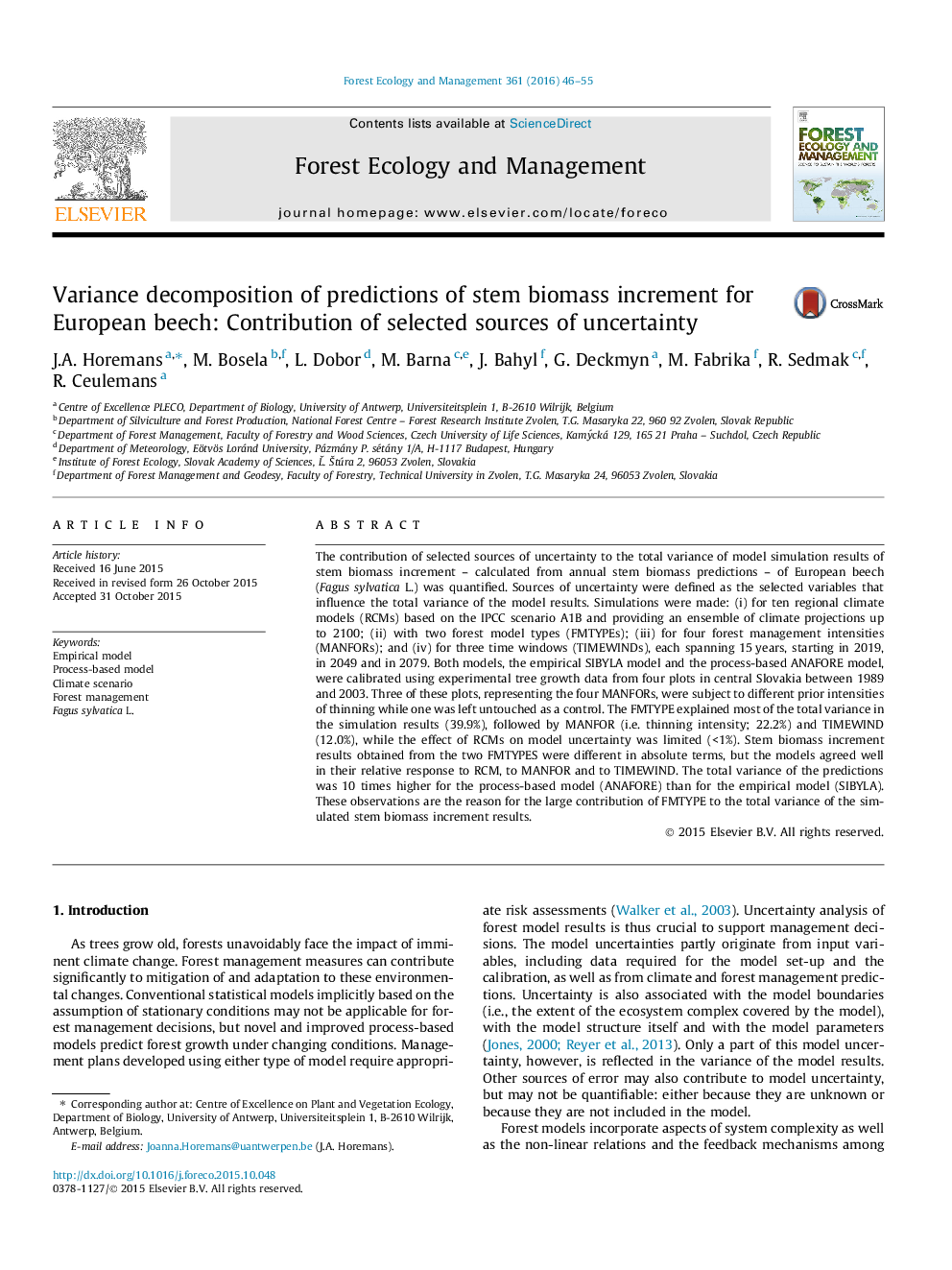| Article ID | Journal | Published Year | Pages | File Type |
|---|---|---|---|---|
| 6542422 | Forest Ecology and Management | 2016 | 10 Pages |
Abstract
The contribution of selected sources of uncertainty to the total variance of model simulation results of stem biomass increment - calculated from annual stem biomass predictions - of European beech (Fagus sylvatica L.) was quantified. Sources of uncertainty were defined as the selected variables that influence the total variance of the model results. Simulations were made: (i) for ten regional climate models (RCMs) based on the IPCC scenario A1B and providing an ensemble of climate projections up to 2100; (ii) with two forest model types (FMTYPEs); (iii) for four forest management intensities (MANFORs); and (iv) for three time windows (TIMEWINDs), each spanning 15Â years, starting in 2019, in 2049 and in 2079. Both models, the empirical SIBYLA model and the process-based ANAFORE model, were calibrated using experimental tree growth data from four plots in central Slovakia between 1989 and 2003. Three of these plots, representing the four MANFORs, were subject to different prior intensities of thinning while one was left untouched as a control. The FMTYPE explained most of the total variance in the simulation results (39.9%), followed by MANFOR (i.e. thinning intensity; 22.2%) and TIMEWIND (12.0%), while the effect of RCMs on model uncertainty was limited (<1%). Stem biomass increment results obtained from the two FMTYPES were different in absolute terms, but the models agreed well in their relative response to RCM, to MANFOR and to TIMEWIND. The total variance of the predictions was 10 times higher for the process-based model (ANAFORE) than for the empirical model (SIBYLA). These observations are the reason for the large contribution of FMTYPE to the total variance of the simulated stem biomass increment results.
Related Topics
Life Sciences
Agricultural and Biological Sciences
Ecology, Evolution, Behavior and Systematics
Authors
J.A. Horemans, M. Bosela, L. Dobor, M. Barna, J. Bahyl, G. Deckmyn, M. Fabrika, R. Sedmak, R. Ceulemans,
